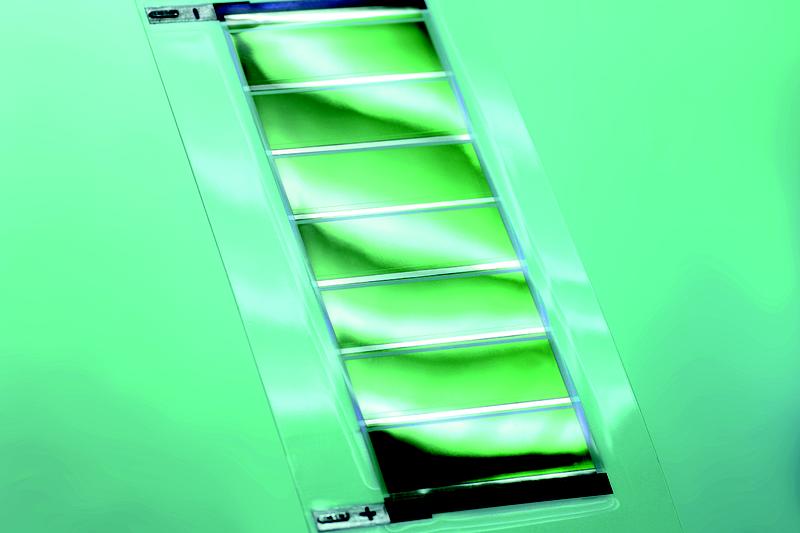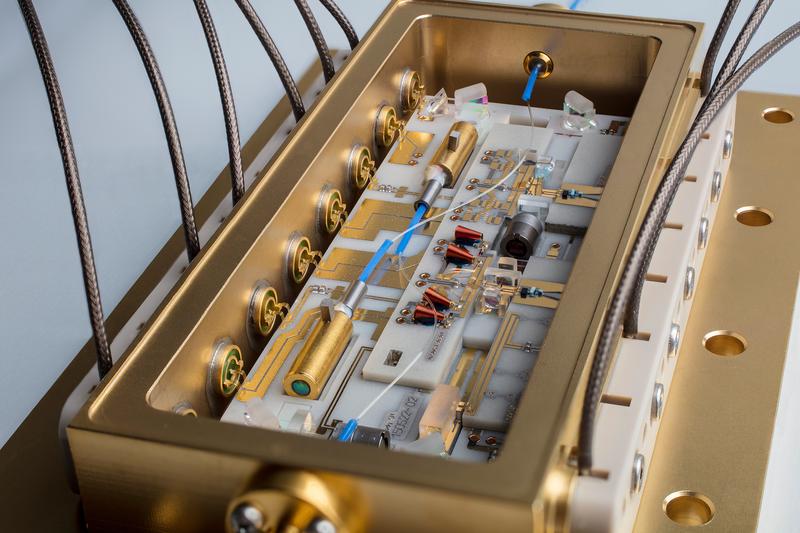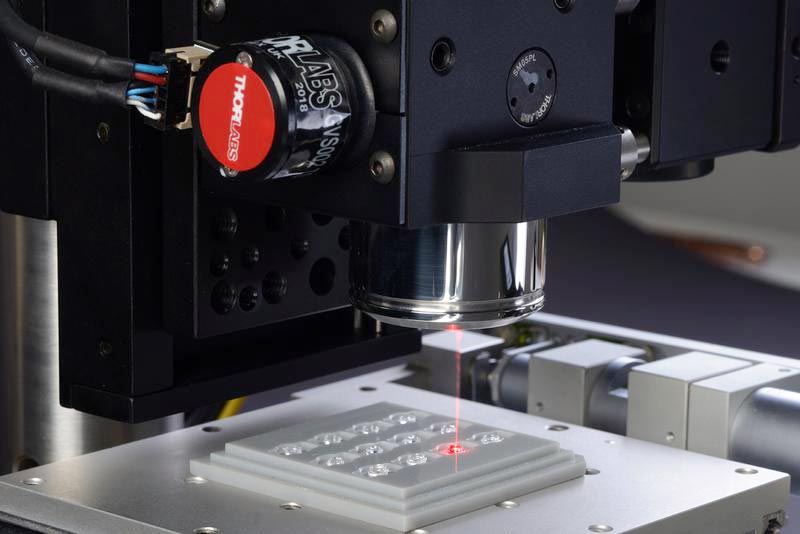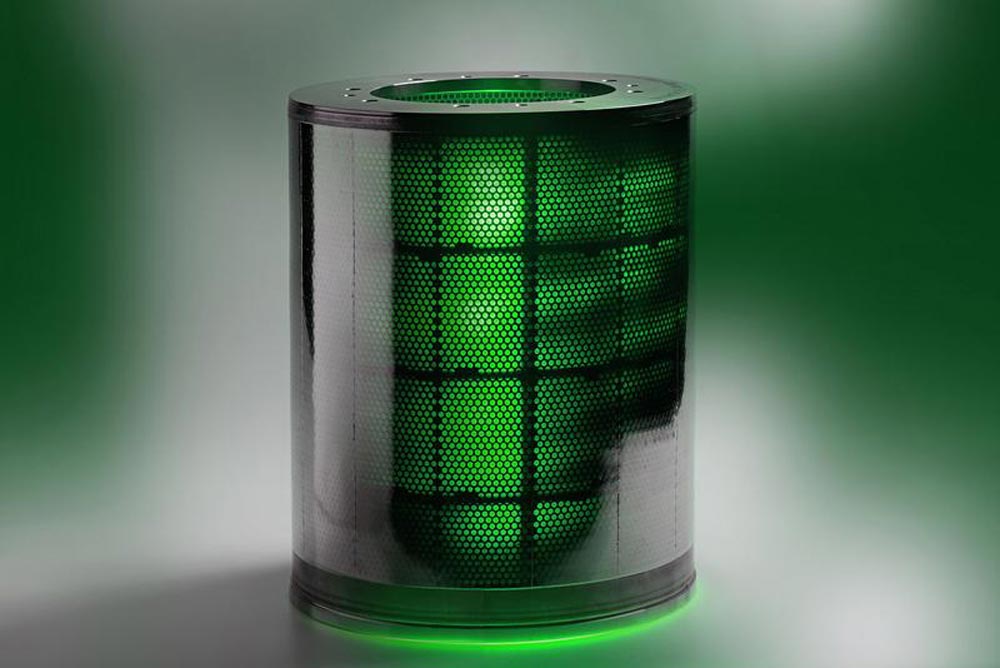

Flexible and organic: A semifinished flexible solar cell is produced on a roll-to-roll system using laser structuring, and will then be finished in a printing process.
Fraunhofer ILT, Aachen, Germany.
For several years now, the electronics and other industries have been abuzz about an entirely new spectrum of applications below the familiar field of silicon technology. The object of all this excitement is organic and printed electronics, which make it possible to produce thinner, lighter and more flexible components. Application areas for this pioneering new technology include lighting elements, TV and cell phone displays, photovoltaics and intelligent packaging such as RFID tags.
Fraunhofer ILT inscribes OLEDs
The LOPEC (Large-area, Organic & Printed Electronics Convention) trade fair in Munich is the leading exhibition for printed electronics worldwide with the most important conference, according to its organizers, and it has been presenting the latest developments in the field for seven years now.
Fraunhofer Institute for Laser Technology ILT has responded to the significance of this venue, working in cooperation with COPT NRW to exhibit its research developments, which support companies in the manufacturing of new components using organic and printed electronics. Currently, Fraunhofer ILT is developing a method for adding inscriptions to OLED components.
“We have succeeded in producing an inscription in the illumination surface by means of selective deactivation of organic material,” explains Fraunhofer ILT researcher Christian Hördemann. “We use a laser beam activated in ultrashort pulses. Together with our partner company OLEDWorks, we are working on developing a novel process to achieve long-term stable inscription and customization of OLEDs.”
An additional focus of their work entails laser microstructuring. The benefits of this process include its high resolution in the µm range, its high throughput for large surfaces, and its wide range of design possibilities.
Laser structuring for flexible solar cells
In Munich, Fraunhofer ILT will be showcasing additional applications involving laser microstructuring of extremely thin layers to demonstrate how the properties of organic components can be influenced using this technology. Picosecond lasers, for instance, can be used for roll-to-roll production of organic solar cells. Processes for the roll-to-roll production of organic solar cells are being researched in collaboration with Coatema Coating Machinery GmbH from Dormagen and Solarmer Energy, Inc. from the US. A good example of this method being used in production is the “Mini Module” flexible solar cell.
“At the moment we have achieved efficiency over 6% by using laser patterned ITO in the fabrication of our mini-sized flexible OPV modules,” explains Dr. Yanping Wang, Principal Researcher at Solarmer Energy, Inc. “Our flexible OPV enables versatile designs for applications that were not possible before, especially the low-power application in the rapidly emerging wearable electronics and Internet of Things markets.”
Our experts at LOPEC 2016
Further information and additional laser innovations for printed and organic electronics will be on hand at the joint booth of COPT NRW and Fraunhofer Institute for Laser Technology ILT at the LOPEC exhibition on April 6-7, 2016 in Munich (hall B0, booth 404).
Contact
Dipl.-Ing. Christian Hördemann
Gruppe Mikro- und Nanostrukturierung
Telefon +49 241 8906-8013
christian.hoerdemann@ilt.fraunhofer.de
Dr.-Ing. Arnold Gillner
Leiter des Kompetenzfeldes Abtragen und Fügen
Telefon +49 241 8906-148
arnold.gillner@ilt.fraunhofer.de
http://s.fhg.de/UQW here you may find the press release and printable image material
http://www.ilt.fraunhofer.de












